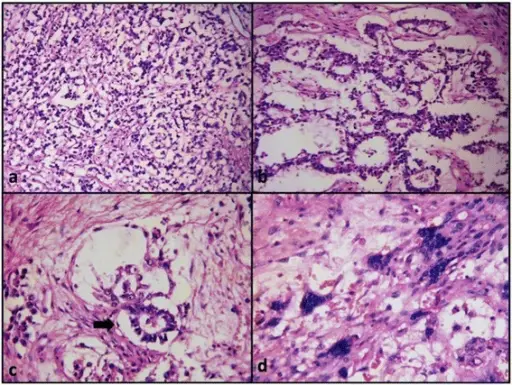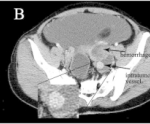Mixed germ cell tumors of the ovary is a rare type of cancer that is made up of at least two different types of germ cell tumors.
What is the Pathology of Ovarian Mixed Germ Cell Tumors?
The pathology of ovarian mixed germ cell tumors is:
-Etiology: The cause of ovarian mixed germ cell tumors is multiple causes.
-Genes involved: CD117, CD133, SALL4, OCT4, TCL1 genes.
-Pathogenesis: The sequence of events that lead to ovarian mixed germ cell tumors is malignant proliferation.
-Morphology: The morphology associated with ovarian mixed germ cell tumors shows solid and cystic variegated cut surface.
-Histology: The histology associated with ovarian mixed germ cell tumors shows mixed germ cell tumors and possibly teratomas.
How does Ovarian Mixed Germ Cell Tumors Present?
Patients with ovarian mixed germ cell tumors typically females at young adolescent age. The symptoms, features, and clinical findings associated with ovarian mixed germ cell tumors include vaginal bleeding, fever, pallor, and edema. A palpable mass is often present.
How is Ovarian Mixed Germ Cell Tumors Diagnosed?
Ovarian mixed germ cell tumors is diagnosed by ultrasonography, measurement of AFP, beta hCG LDH, and CA125 levels in blood, physical examination, and biopsy.
How is Ovarian Mixed Germ Cell Tumors Treated?
Ovarian mixed germ cell tumors is treated by cisplatin combination chemotherapy with etoposide, salpingo-oophorectomy with adjunctive chemotherapy, radiation therapy, and surgical removal.
What is the Prognosis of Ovarian Mixed Germ Cell Tumors?
The prognosis of ovarian mixed germ cell tumors is good after treatment.



